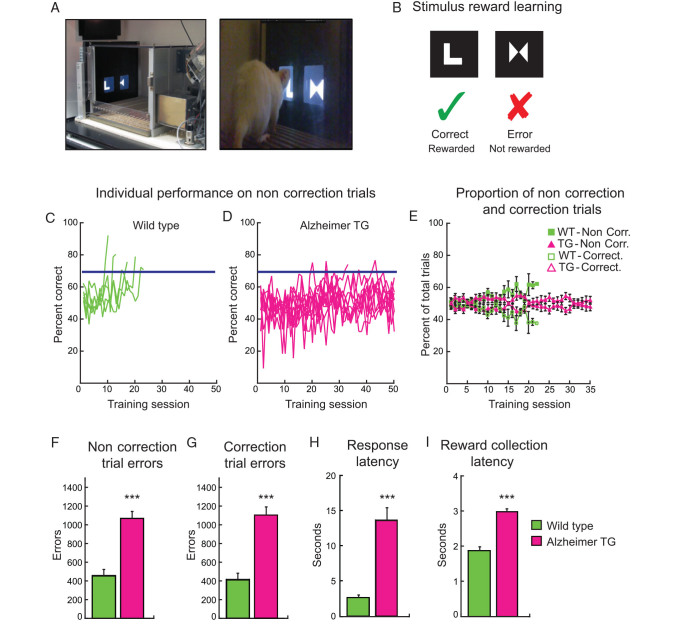Figure 2.
Alzheimer transgenic rats at the preplaque stage were severely impaired in associative learning. ( A ) Photograph showing touchscreen operant platform and rat making nose-poke touch response to visual stimulus. ( B ) Schematic illustration of stimulus pair used in the visual discrimination task and the reward contingencies. ( C, D ) Individual learning curves for wild-type and Alzheimer transgenic rats. The blue line represents criterion performance at 70% accuracy on noncorrection trials over 2 consecutive training sessions. ( E ) Proportion of total correction and noncorrection trials for the first 35 sessions only. Wild-type rats commit more noncorrection trials and fewer correction trials with time, whereas the Alzheimer rats fail to show such improvement. ( F ) Preplaque Alzheimer transgenic rats made many noncorrection trial errors and ( G ), correction trial errors, while learning the stimulus–reward association and never reached criterion performance, indicating that they never learned the stimulus–reward association. ( H ) Alzheimer transgenic rats were very slow in making a response. ( I ) The Alzheimer transgenic rats were also slow in collecting food rewards when they made a correct response. Data represent mean ± SEM. *** P < 0.001.

